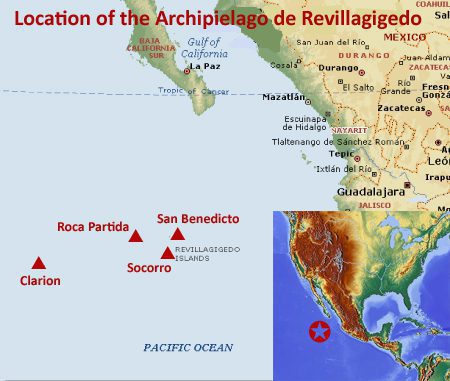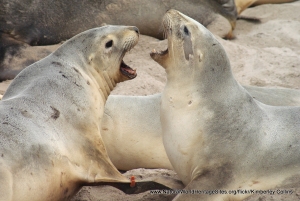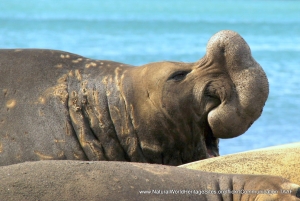EXPLORE the Archipielago de Revillagigedo with this slideshow, check the location map and get all the facts and information below.
For slideshow description see right or scroll down (mobile). Click to view slideshow
Location and Values: The Archipielago de Revillagigedo is located in the eastern Pacific Ocean (600-1,000 km south-west of Mexico’s Gulf of California). It includes four widely separated, uninhabited islands that are the volcanic peaks of a submerged mountain range, lying in the deep ocean. The islands themselves are relatively small (the largest, Isla Socorro, being about 15 x 20 km, while the smallest, Isla Roca Partida, is little more than a remote rock outcrop). The world heritage site includes a protected marine zone stretching for 12 nautical miles (about 22 km) from the shoreline of each island, accounting for more than 90% of the site’s total area. The islands provide critical habitat for seabirds and a small number of endemic species and sub-species of birds, reptiles and plants. The surrounding waters (which reach depths of 3,700m in the surrounding buffer zone) lie in a highly productive transition zone where the mixing of ocean currents generates an abundant marine life, attracting large concentrations of ‘ocean giants’ such as manta rays, humpback whales, pelagic fish, dolphins and sharks.
Conservation Status and Prospects. According to IUCN’s Conservation Outlook Assessment (2020) the conservation status of the Archipielago de Revillagigedo is ‘good with some concerns’. The IUCN report notes that the geographical isolation of the site has served to give it a high degree of natural protection and this is further supported by competent and effective management interventions by government and other agencies. The main threats are from invasive species and illegal fishing. Sheep and pigs caused significant damage to the natural vegetation and terrestrial ecosystems in the past, but these were eradicated prior to the site’s inscription on the world heritage list. Feral cats remain a problem on Socorro, although there has been good progress in recent years towards their eradication. Rabbits are still abundant on Clarion and efforts are being made to eradicate them from the island.
Links:
Google Earth
Official UNESCO Site Details
IUCN Conservation Outlook
UNEP-WCMC Site Description
Birdlife IBA
Slideshow description
The slideshow ‘tells the story’ of the Archipielago de Revillagigedo with a portfolio of photos that illustrate the landscape characteristics of three of the main islands and the associated marine and terrestrial wildlife. It begins with views of Isla San Benedicto, with its barren slopes, recent lava flows, spectacular cliffs and sea stacks, before proceeding to the Isla Roca Partida, a remote rock outcrop used as a landing stage and resting place by vast numbers of seabirds. Some of the ‘ocean giants’ that inhabit the offshore waters are shown, including humpback whales, sharks, manta rays and dolphins, together with some of the smaller marine species that occupy the rocky substrates around the shores.
The slideshow continues with a series of photos from the largest of the four islands – Isla Socorro – with its relatively flat profile and extensive areas of grass and shrub-lands. Socorro supports three endemic species of birds (and 11 endemic sub-species), many of which are shown, as well as two endemic lizards and two endemic species of snakes (not shown here). The volcanic nature of the islands is evident on Socorro where fumeroles are in a continuous state of activity. The slideshow concludes by illustrating one of the issues that threatens the islands’ terrestrial wildlife and habitats – the problems of invasive alien animals. A bird that has been killed by feral cats is shown, as well as a rabbit (which remains a particular problem on Isla Clarion).
The following Flickr photographers and other sources are acknowledged with thanks for their contributions to this slideshow: Alan-Harper, Alfonso-Exposito, carfull…from Wyoming, Jason-Heller, Michel-Jean-Louis-David, Paolo-Lora, Ray-Ruffell and Elias-Levy.
Factfile
Website Categories:
Marine & Coastal;
Islands;
Area: 6,367 km2
Inscribed: 2016
UNESCO Criteria:
- Exceptional natural phenomenon (vii);
- Outstanding natural beauty (vii);
- Ecological processes (ix);
- Natural habitat for biodiversity (x);
- Significant number of rare, endemic and/or endangered species (x)




